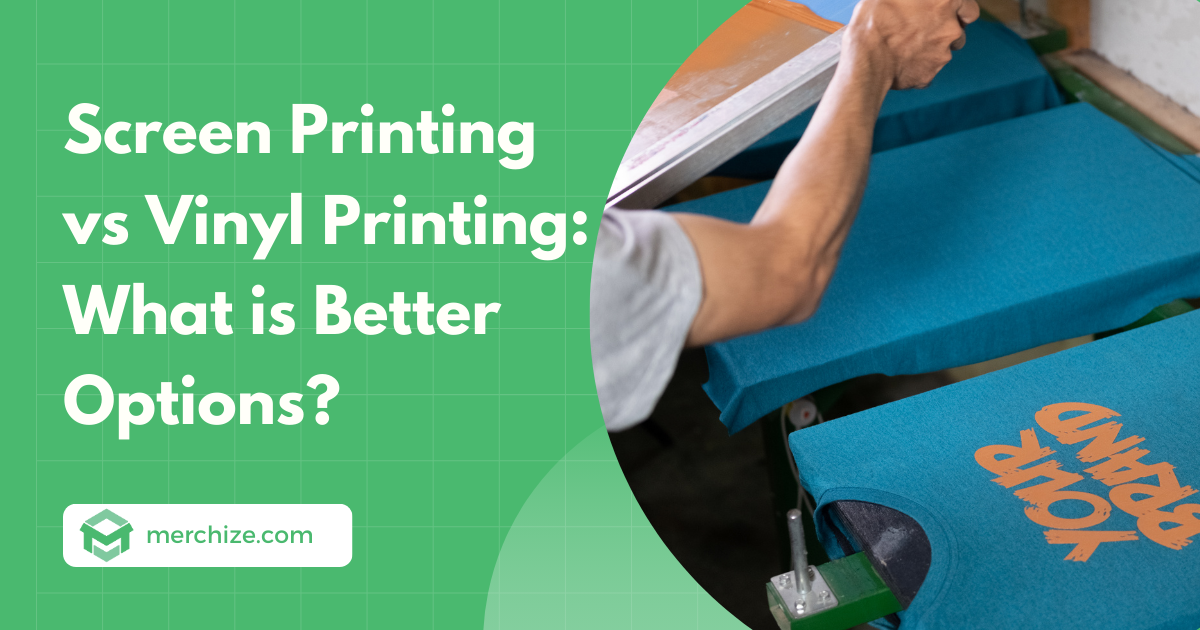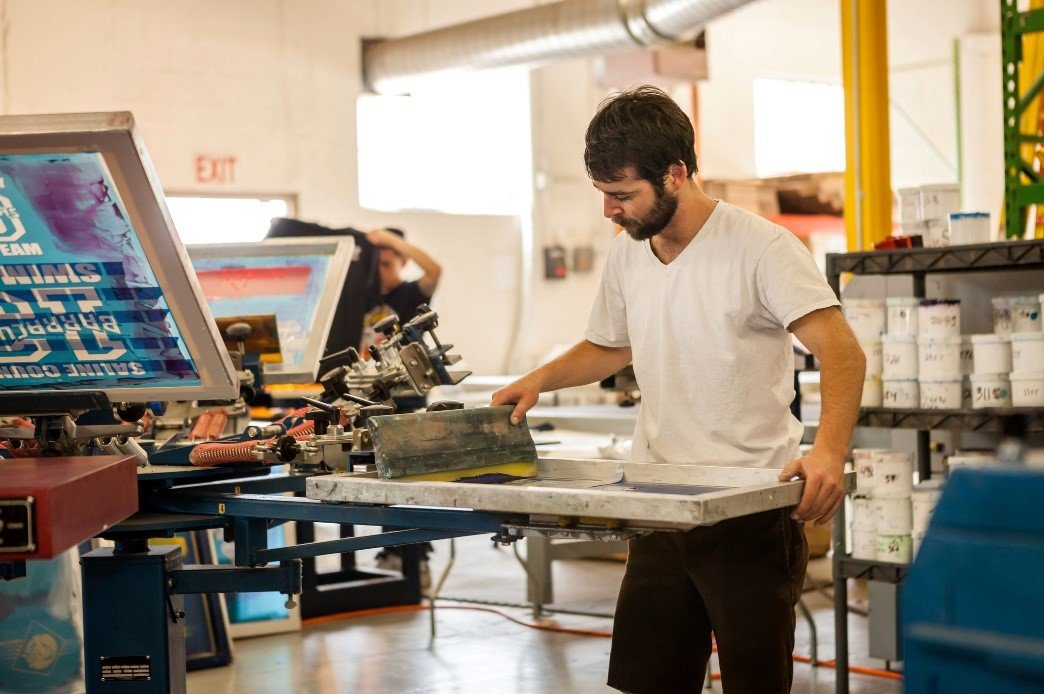Getting My Tx Tees To Work
Getting My Tx Tees To Work
Blog Article
6 Easy Facts About Tx Tees Described
Table of ContentsThe Main Principles Of Tx Tees Tx Tees Fundamentals ExplainedA Biased View of Tx TeesUnknown Facts About Tx TeesAll About Tx TeesHow Tx Tees can Save You Time, Stress, and Money.What Does Tx Tees Do?
Add up various other prices, like the number of utilities it takes to run the store and the price of ink and solution per layout. Take the print below.The emulsion needs to only be a couple of cents because you 'd only require to coat one screen for this job. Exactly how much should you charge per t-shirt to make a profit? Typically, printers try to make up to 45% profit on a print job. Right here's a table to aid you determine that: complete price per thing percent of preferred profit as a decimal (example:.25 or.45) earnings made per thing per task Currently allowed's discuss the productivity of DTF.

With DTF, you can publish a handful of t shirts, or simply one. Both display printing and DTF have their niches in the globe.
Examine This Report about Tx Tees
The very best means to understand? Ask about and see what printing shop like yours are doing. custom cap printing. Try both out and see which you like better
When you're choosing what type of printing method to utilize for printing your artwork designs on your garments, it's essential that you recognize the differences between these 2 methods so you can take full advantage of results while reducing prices. Screen printing is the most generally used strategy for publishing designs on textiles.
DTG printing is likewise referred to as place or straight to garment printing due to the fact that it publishes only what is required rather than making a screen as screen printers do. https://tx-tees-45701767.hubspotpagebuilder.com/blog/txtees02. Screen printing works by screen filler squeegee screen printing ink screen mesh display, after that transferring the photo to garment utilizing warm and/or pressure
The DTG printer uses unique dye-sublimation inks that are used into a pre-designed photo by a digital printing system. The inks come to be component of the textile, permitting vivid shades and phenomenal information. It's also called place or straight to garment printing due to the fact that it prints only what is required rather than making a display as display printers do.
The Basic Principles Of Tx Tees
It's much quicker - you can print a fullcolor photo in minutes, as opposed to hours for display printing. Second, there's no established up time or prices involved - you can publish any kind of layout you like, without having to create a display. Third, there's no waste - because screen printers display print one style at once, they need to screen each color individually.
The paper is extremely pricey and can only be used once. Once it's published on, it has to be thrown out. - The initial acquisition cost is less than the upfront financial investment of DTG printers- You can print multi-color designs one display at a time instead of having to print each shade independently like DTG printing.

The Main Principles Of Tx Tees
However, rather than making use of display mesh as screen printers do, dye sublimation printers utilize laser modern technology to transfer your images onto garments or paper. A heat process transfers the dye from its solid-state straight into the gas stage which consequently merges it onto textile substratums when they are quickly warmed to heats under high stress.
Sublimation printing is environment-friendly. It uses less water than screenprinting, and since it doesn't include the usage of hazardous solvents, it's safe for all sorts of clothing. The color sublimation inks are likewise odor-free when cured, unlike display printers that make use of damaging chemicals throughout the screen printing process that leave an unpleasant smell.
They additionally conserve money on costly devices like direct check exposure devices considering that color sublimation printers don't need a UV exposure unit or a flash remedy stove that is normally utilized in display printing (custom screen printing). What is direct to garment printing (DTG Printing)? DTG printing is a digital screenprinting procedure that publishes straight onto material making use of specialized inkjet printers
Rumored Buzz on Tx Tees
DTG printing offers many advantages over standard screenprinting, consisting of the capacity to publish photo high quality pictures, higher shade vibrancy, and the ability to print layouts on darker textiles. DTG printers work by heating the fabric ink up until it becomes a gas. The gas then permeates the fabric, bonding with the fibers to develop a permanent print.

Display printers just prepare their display then start publishing till they lack product or ink.- There is a vast array of experienced display printers around the world, which can be handy for beginners. - It's a slower process - display printers usually have to wait for the ink to dry prior to they can publish the next shade- Display printers need hand-operated labor, so there's a higher learning contour and it takes longer to create a high-quality design- Display printing isn't as precise as DTG printing, so you might get some "bleeding" of shades from one component of the photo onto another if not done effectively.
Fascination About Tx Tees
Rather of making use of display mesh as screen printers do, dye sublimation printers utilize laser innovation to move your photos onto garments or paper. A warmth process transfers the dye from its solid-state straight into the gas phase which in turn fuses it onto textile substrates when they are quickly heated to high temperatures under high stress.
Sublimation printing is eco-friendly. It makes use of less water than screenprinting, and due to the fact that it does not entail using dangerous solvents, it's secure for all types of clothing. The dye sublimation inks are also odorless when healed, unlike screen printers that utilize damaging chemicals throughout the display printing process that leave behind an undesirable odor.
They additionally conserve money on expensive devices like exposure systems given that color sublimation printers don't need a UV direct exposure unit or a flash cure oven that is normally made use of in screen printing. What is direct to garment printing (DTG Printing)? DTG printing is an electronic screenprinting process that publishes directly onto textile using specialized inkjet printers.
The Single Strategy To Use For Tx Tees
DTG printing provides many advantages over typical screenprinting, consisting of the capacity to publish photographic quality photos, higher color vibrancy, and the ability to publish styles on darker textiles. DTG printers function by warming the fabric ink up until it becomes a gas. The gas then permeates the textile, bonding with the fibers to produce a permanent print.
Report this page